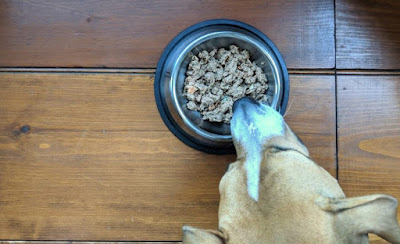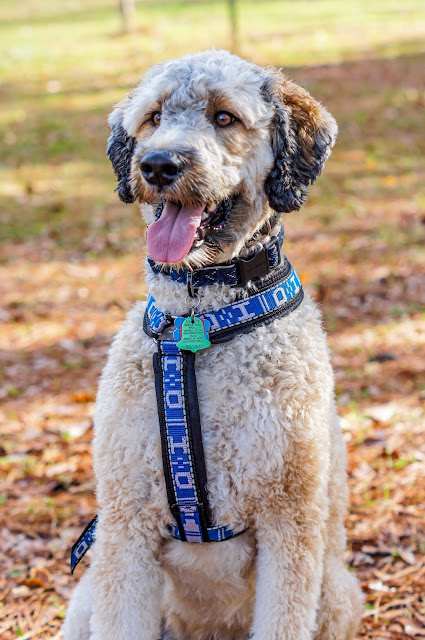 |
| What should I feed my puppy? |
-What should I feed my puppy?
Puppies are largely carnivores but also will eat some plant-based foods. Puppies naturally wean off their mother’s milk at around 8-12 weeks aged. Wild dogs feed their young with prey animal carcasses. within the wild, when young dogs are sufficiently old (around 7-8 weeks old) they begin to eat their own whilst simultaneously decreasing the quantity of milk they suckle from their mother.
-Basic puppy feeding guide:
The following information is general advice, but as each dog is private, seek veterinary advice, particularly if your puppy features any special dietary needs or has a reaction to a typical diet.
The basis of your puppy’s diet should be a top-quality balanced premium commercial puppy food that's appropriate for his or her life stage and health status. By reading the label, you'll make sure it complies with the Australian Standard for the Manufacturing and Marketing of Pet Food AS 5812:2017.
You can also offer some natural foods to supply variety. Natural foods include fresh human-grade meat like diced up pieces of raw lamb. Avoid feeding an excessive amount of meat off the bone while the pup is growing. this is often important to stop certain nutritional deficiencies during growth. Natural foods include raw meaty bones. Always ask your vet first that raw bones are suitable for your particular puppy (e.g. some puppies may have misshapen jaws and should have difficulty chewing on raw bones).
We recommend you select only human-grade meat and meaty bones because some raw meat products marketed as pet food (pet meat/pet mince/pet rolls and bone products) contain preservatives to stay them looking fresh, but these are often detrimental to the dog’s health. There are many pet food safety incidents linked to sulfite preservative-induced thiamine (Vitamin B1) deficiency, which may be fatal. you ought to avoid sausages, meat, and cooked manufactured meats as they will also contain sulfite preservatives.
Puppies should be offered food a minimum of 4 times per day to start with, gradually reducing the number of meals as they grow (adult dogs should be fed a minimum of twice per day to assist avoid bloat, which may be fatal).
It is important to not underfeed or overfeed puppies. Research indicates that overfeeding puppies (particularly large and giant breeds) can predispose them to muscle and bone problems. Your vet is going to be ready to advise you on what proportion and what to feed your puppy.
If your vet advises that it's appropriate to feed raw bones to your puppy, they ought to be introduced gradually. The bone must be large enough so that the puppy cannot fit the entire bone in its mouth or swallow the bone whole. Avoid large marrow bones, T-bones, ‘chop’ bones (e.g. lamb cutlets), large knucklebones, or bones sawed lengthwise as dogs may crack their teeth on these. weigh your pup, assess your pup’s body condition score, and supply advice.
The fresh beverage must be available the least times but don't offer your puppy milk as this will cause gastrointestinal upsets.
-Feeding bones:
Between four to 6 months aged, the permanent teeth appear and grow rapidly. Introducing fresh raw meaty bones at around 12 weeks aged ensures they're chewing actively around the time the permanent teeth erupt. This chewing is vital to alleviate “teething” issues and also provides several important health benefits including keeping teeth and gums healthy.
Some examples include raw lamb ribs and flaps (but not lamb chops), and raw chicken wings. Too many raw bones may cause constipation. One raw bone per week is usually well-tolerated. ‘Meaty’ bones are better.
Never feed your dog cooked bones as these can splinter, causing potentially fatal internal damage or ileus. Bones should be raw.
A small amount of finely-cut substance could also be offered, like cooked pumpkin or carrots. Raw bones should be introduced gradually. The bone must be large enough so that the puppy cannot fit the entire bone in its mouth or swallow the bone whole. Avoid large marrow bones, T-bones, ‘chop’ bones (e.g. lamb cutlets), large knucklebones, or bones sawed lengthwise as dogs may crack their teeth on these.
You should always supervise your puppy once they are eating raw bones.
Dogs adore bones and may sometimes become protective over them, so lookout and discourage young children et al. from approaching dogs whilst they eat.
-Other foods:
Cooked meat like boiled chicken or lamb could also be offered occasionally, but ensure there are not any cooked bones, onions/onion sauces, or other toxic substances present (see below).
Tinned sardines in springwater, tinned tuna, and tinned salmon can also be offered as a treat occasionally (take care of any fish bones). Please avoid feeding fish constantly.
A small amount of finely-cut substance could also be offered, like cooked pumpkin or carrots.
Provide access to grass (avoid chemically treated grass and toxic plants). Puppies will sometimes eat grass which can be a source of substance and micronutrients.
Calcium powder supplements shouldn't tend (unless directed by a veterinarian).
-Toxic foods:
Do not ever feed the subsequent substances as they're toxic to dogs (note this is often not an entire list): alcohol, onions, onion powder, garlic, chocolate, coffee or caffeine products, moldy or spoiled foods or compost, avocado, dough, yeast dough, grapes, raisins, sultanas (including in Christmas cakes, etc), currants, nuts (including macadamia nuts), fruit stones or ‘pits’ (e.g. mango seeds, apricot stones, avocado stones), fruit seeds, corncobs, green unripe tomatoes, mushrooms, cooked bones, small pieces of raw bone, fatty trimmings/ fatty foods, salt, and roughly-cut vegetables.
Also, ensure your pet dog doesn’t have access to string wrappings around rolled roasts or absorbent pads found under meat when wrapped on trays.






























